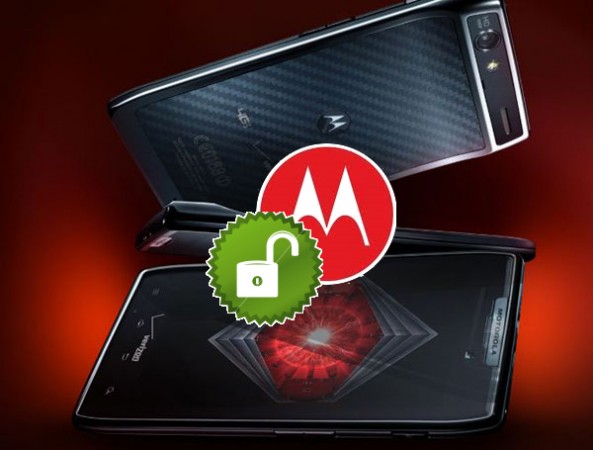
A few months ago I started a campaign to prompt Motorola to unlock their Android devices, now when I say unlock I don’t mean carrier unlocking where you can use a phone with any SIM card, I mean unlocking the bootloader which is the staging area of custom roms on Android handsets.
It is having access to the bootloader that allows you to flash modified versions of Android and custom recoveries (backup utilities) onto your phone. This is how you would load up CyanogenMod Rom or Miui onto the phone and thus change your Android experience, it is also usually the way you would flash a version of your own rom, but with root access and bloatware removed.
The last time I spoke with Motorola they said they were working on a bootloader solution that would allow the unlocking and re-locking of the bootloaders on their phones later this year. It is now “later in the year” and Motorola has informed me that the Motorola RAZR will be the first phone to have this new bootloader solution included.
I spoke with Christy Wyatt (VP & GM Enterprise Mobile Devices at Motorola) and the team last night to get an update on the solution that Motorola has been working on.
The Motorola RAZR which will be announced later this month in Australia is now the first phone to include the fully implemented lock/unlock bootloader software in it. Motorola recently debuted the device on the Verizon network in the U.S. and Christy confirmed that Verizon did opt to disable the bootloader unlock option. This doesn’t mean there is no hope for globally available devices. We were able to confirm that the global version of the RAZR will still have the code in it, but there will still be an opportunity for carriers to have this disabled. We will find out about Optus’ version at their launch on the 27th October.
This is in no way bad news, as once Motorola has officially launched the phone in their global markets, they will be working to have a list of the models that will be unlocked displayed on their motodev.com website.
There was still uncertainty around what this would mean for phones purchased free from carriers, but Christy did take an action to talk to her team and will get back to me soon.
Motorola also noted that they are now reviewing their upgrade metrics for their current devices and are formulating their Ice Cream Sandwich update strategy, this means that the new bootloader solution won’t be broadly deployed until Ice Cream Sandwich builds start rolling out to their phones (where carriers will allow).
Christy did mention that when it comes to determining which devices will receive Ice Cream Sandwich this year, it is based on volumes, carriers and hardware capabilities. A carrier can choose not to do an upgrade to their devices dependent on their testing requirements or sales strategies. We’re all too familiar with this when it comes to Telstra and it’s “NextG Optimising”.
There was an acknowledgement that Motorola has been on the more conservative side when it comes to the handling of the bootloader solution and this could be due to the U.S. market with which they operate in. They are starting to get questions from regulators around end users being able to modify code on the phone that could affect how it accesses cellular networks. It’s something that Motorola has to be mindful of while proceeding down this path to more open devices.
So over the coming weeks we should start to see some more information trickle out about the RAZR and which carriers will allow the unlockable bootloader. This has been a great result considering the locked down nature of all Motorola devices that have been released this year and almost all we can expect from a company as large and as tied to the U.S. carriers (not the most dynamic of thinkers) as Motorola.
On another note…
Now that Motorola has an implemented bootloader solution in the Motorola RAZR, I asked what sort of engagement would happen within the development community.
Motorola’s development approach up until now has been more geared towards App Developers and they currently don’t have plans around supporting community development. This does not mean that they are not willing to help the community, but currently cannot commit to it.
Christy and I discussed the option for community support from their internal development team and securing devices for developers in markets with locked bootloaders. This was another action that Motorola was going to take with them and get back to me about.
I have confidence that we will start to see some more openness from Motorola as the weeks progress and depending on the results of my questions that Christy will get back to me on, we could also see a bit more community engagement from them.





You’re so interesting! I do not think I’ve read anything like this before. So good to discover someone with original thoughts on this issue. Really.. thank you for starting this up. This website is one thing that’s needed on the web, someone with a little originality! http://androidmg.com
Any update on this sine the meeting?
Makes you wonder, why cant one flash an unlocked bootloader from an unlocked motorola razr over a locked bootloader… I think this will be yet another huge failure by Motorola…
You make it onto Tech News today podcast YAY!
That’s make the dilemma between the Razr and the Galaxy Nexus even harder…